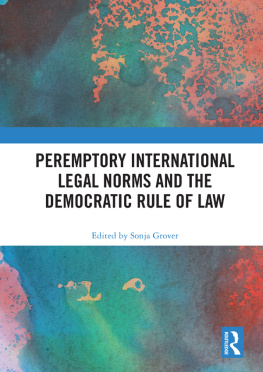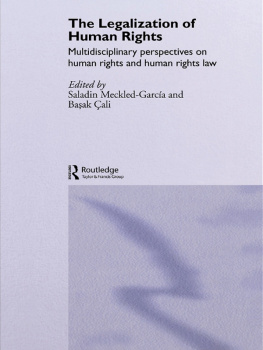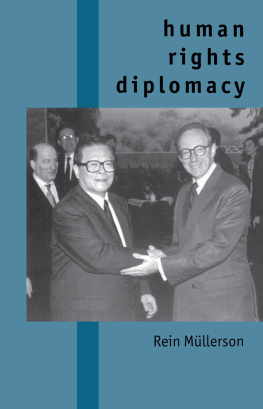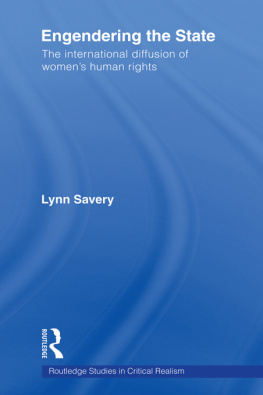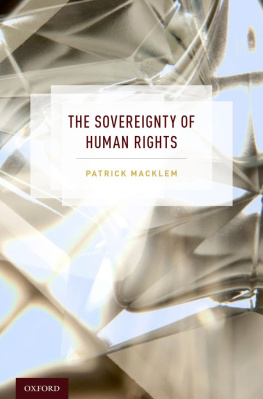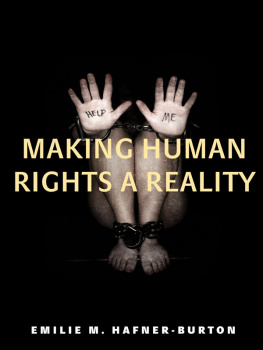Human Rights, Iranian Migrants, and State Media
This book offers a detailed analysis of the Islamic Republic of Irans approach toward human rights in the media. It looks at the state-owned and state-controlled Islamic Republic of Iran Broadcasting (IRIB), employing content analysis and multimodal critical discourse analysis to explore its underlying strategies in portraying the international rights norms. The book also features analysis of surveys and interviews of recent Iranian migrants to determine the extent to which the Iranian public is aware of human rights principles and their views on whether and how the international rights norms are portrayed on IRIB.
Shabnam Moinipour has a PhD in human rights and media communications and an MA in theory and practice of human rights. She has been a visiting lecturer at the University of Westminster and a researcher at various human rights organizations including Open Doors International, Iran Human Rights Documentation Center, and the Human Rights in Iran Unit.
Routledge Studies in Media, Communication, and Politics
Digitizing Democracy
Edited by Aljosha Karim Schapals, Axel Bruns, and Brian McNair
Communicating Populism
Comparing Actor Perceptions, Media Coverage, and Effects on Citizens in Europe
Edited by Carsten Reinemann, James Stanyer, Toril Aalberg, Frank Esser, and Claes H. de Vreese
Human Rights, Iranian Migrants, and State Media
From Media Portrayal to Civil Reality
Shabnam Moinipour
First published 2020
by Routledge
52 Vanderbilt Avenue, New York, NY 10017
and by Routledge
2 Park Square, Milton Park, Abingdon, Oxon OX14 4RN
Routledge is an imprint of the Taylor & Francis Group, an informa business
2020 Taylor & Francis
The right of Shabnam Moinipour to be identified as author of this work has been asserted by her in accordance with sections 77 and 78 of the Copyright, Designs and Patents Act 1988.
All rights reserved. No part of this book may be reprinted or reproduced or utilised in any form or by any electronic, mechanical, or other means, now known or hereafter invented, including photocopying and recording, or in any information storage or retrieval system, without permission in writing from the publishers.
Trademark notice: Product or corporate names may be trademarks or registered trademarks, and are used only for identification and explanation without intent to infringe.
Library of Congress Cataloging-in-Publication Data
Names: Moinipour, Shabnam, author.
Title: Human rights, Iranian migrants, and state media: from media portrayal to civil reality / by Shabnam Moinipour.
Description: London; New York, NY: Routledge, 2019. |
Series: Routledge studies in media, communication, and politics: digitizing democracy | Includes bibliographical references and index.
Identifiers: LCCN 2019021343 |
Subjects: LCSH: Human rights in mass media. | Television broadcasting of newsPolitical aspectsIran. | Sazman-i Sada va Sima-yi Jumhuri-i Islami-i Iran. | Mass media policyIran. | Human rightsIran.
Classification: LCC P96.H852 I755 2019 | DDC 323.0955dc23
LC record available at https://lccn.loc.gov/2019021343
ISBN: 978-0-367-02327-0 (hbk)
ISBN: 978-0-429-40020-9 (ebk)
Typeset in Times New Roman
by codeMantra
The Issue at Hand
Following a long history of injustices emanating from global historical invasions and wars, which reached their climax in the 20th century with the two world wars, human rights were officially born and institutionalized at the global level with the founding of the United Nations (UN) in 1945. The UN charter was the first international mechanism that incorporated human rights as a concept and made the promotion and protection of those rights one of the purposes of not only individuals but also the collective obligations of states (). Since then, human rights have become an ongoing dialogue between various entities and states, which are morally and legally obligated to not only protect their citizens from human rights violations but also promote human rights principles. Even though the UN does not have enforcement powers, for most states, Iran included, keeping a good image in the international community is of utmost importance. Many individuals and organizations scrutinize human rights within Iran. However, the Iranian regime is in such gross violation of citizens rights that the promotion of human rights principles by Iran is hardly ever closely examined. The scrutiny of the promotional aspect of international human rights law is one of the gaps that this book intends to fill.
Intertwined with the above is the careful analysis of the state media in Iran. How much power the media has is unknown. Contrary to what some scholars believe, it is difficult to measure the influence and effect they have on people. However, the media, undeniably, has a force that shifts individual opinions one way or another. The Nazis were a great example of a state power using the available means of communication. They were masters of propaganda and exploited the media of the press, cinema, and especially radio to attract support and create a consensus around their regime (). The definition of propaganda employed by the Iranian regime resembles that of the Nazisarticulating a few fundamental viewpoints through prescribed clichs and repeating it so much so that the forgetful masses would engrave it in their hearts.
The 1979 Islamic Revolution rendered Iran hybrid, which means that the political system landed on the overlap between democracy and authoritarianism. This hybridity has caused both democratic and authoritarian elements to exist in the country. This hybridity, in turn, has created ambiguities in the political system, which helps the regime function within a complex and diverse society.




